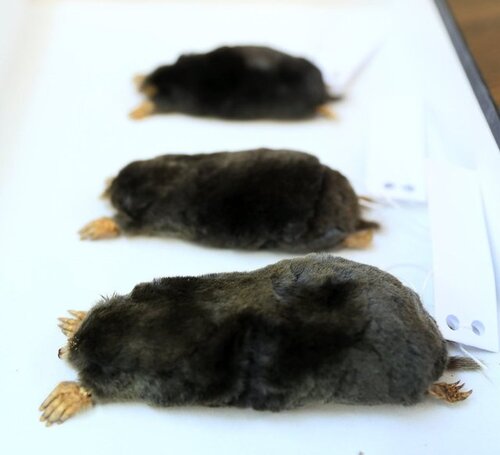Kurdshop - Scientists have discovered two kinds of blind-mole mice species that are believed to have been surviving for 3 million years in the North part of Kurdistan mountains and have not been seen before.
The new species of mice known as "Talpa hakkariensis" and "Talpa davidiana tatvanisis" are mammals.
There is only one kind of Talpa Europaea found in England. In the east, there are several kinds of mice species that live in very small geographical areas.
The researchers have applied the latest technology for "DNA" examinations and have proved that the new biological forms can be verified from the other forms among different groups.
Both of the newly discovered species in the mountains of the North part of Kurdistan can survive at 50 degrees Celsius in the summer and underneath 2 meters of snow in the winter.
The latest research published in the Zoological Journal of the Linnean Society magazine by the Ondokuz Mays University in Turkey, Indiana University in the U.S., and Plymouth University in England researchers.
David Billton, water biology professor at Plymouth University, who was the head of research on finding 80 kinds of animals, mostly ants, says: "The new discoveries are very important for some reasons."
"Nowadays, it is very rare to find new mammal species. There are only 6500 kinds of mammal animals in the world." David Billton continued, "However, it is possible to have 1 or 2 million kinds of ant species living on Earth."

He also mentioned: "Generally, the new species found in this research are similar to other species; since they live under the ground, their body development is more limited. Our research shows that in such kinds of samples, we can see how environmentalism can be underestimated. Even among the mammal groups, people assume that since we have researched them, we know everything about them. In fact, this is not true."
This discovery proves that the Eurasia mice species found have increased from 16 kinds to 18 kinds of them. Each kind possesses various genetic and physical features.
The researchers have applied highly developed analysis methods in different ways on distinct body forms. Those researches had been conducted in the nineteenth century or the samples kept in museums can still be used for further research.
Wholistic analysis on the mice's DNA has been conducted and comparing them to the later species has proved their distinct features.
Finally, "Talpa hakkariensis" found in Julamerg, North part of Kurdistan, was introduced as a new kind of blind-mole rat.
The "Talpa davidiana tatvanisis" found near Badlis is different morphologically. "Talpa Davidiana" was discovered in 1884 for the first time and was introduced as a rare species by the International Union for Conservation of Nature (IUCN).






